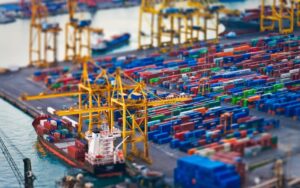India is one of the fastest-growing economies in the world, and its transportation infrastructure plays a crucial role in facilitating trade and travel.Indian Visa Airport and Seaports are vital components of the country’s logistics network, connecting it to international markets and ensuring smooth domestic movement. With a vast coastline and a rapidly expanding aviation sector, India is making significant strides in modernizing its airports and seaports to meet global standards.
Indian Airport and Seaports: A Comprehensive Overview
India boasts a robust network of airports and seaports that cater to both passenger and cargo movement. The country has over 130 operational airports and 13 major seaports, along with numerous minor ports. These facilities contribute significantly to the Indian economy by facilitating international trade, tourism, and employment.
Major Indian Airports
India’s aviation industry has grown tremendously, with several international and domestic airports handling millions of passengers annually. Some of the busiest and most significant airports in India include:
1. Indira Gandhi International Airport (Delhi)
- The busiest airport in India
- Major hub for international and domestic flights
- Equipped with world-class infrastructure and services
2. Chhatrapati Shivaji Maharaj International Airport (Mumbai)
- Handles a high volume of both passenger and cargo traffic
- A key gateway to western India
- Features modern terminals and high-speed baggage handling systems
3. Kempegowda International Airport (Bengaluru)
- A rapidly growing airport with a focus on sustainability
- Major IT and business hub
- Offers efficient connectivity to global destinations
4. Chennai International Airport
- The primary gateway to South India
- Handles significant air cargo operations
- Upcoming expansion projects for improved capacity
5. Netaji Subhas Chandra Bose International Airport (Kolkata)
- A crucial link for northeastern states
- Major focus on cargo and passenger handling
- Plans for modernization and expansion
Key Indian Seaports
India’s coastline stretches over 7,500 kilometers, making its seaports essential for maritime trade. The country has 13 major ports and around 200 minor ports that handle a vast majority of its export and import activities.INDIAN VISA FOR CANADIAN CITIZENS
1. Jawaharlal Nehru Port (Navi Mumbai)
- Also known as Nhava Sheva Port
- The largest container port in India
- Plays a vital role in international trade
2. Chennai Port
- One of the oldest and most significant ports in India
- Handles cargo, containers, and cruise ships
- Major hub for automobile exports
3. Visakhapatnam Port
- Key port on the eastern coast
- Handles bulk cargo, including coal and petroleum
- Undergoing modernization to boost efficiency
4. Cochin Port
- Crucial for spice and marine product exports
- Important hub for tourism and cruise ships
- Integrated with the Kochi International Container Transshipment Terminal
5. Kandla Port (Deendayal Port)
- One of the highest cargo-handling ports in India
- Major gateway for oil and petroleum imports
- Plays a significant role in industrial development
Role of Indian Airport and Seaports in Economic Growth
The development of Indian airport and seaports has had a profound impact on the country’s economic progress. These infrastructures contribute to:
- Boosting trade and commerce: Facilitating import and export activities, supporting industrial growth.
- Enhancing tourism: Airports and cruise terminals attract millions of tourists, generating revenue and employment.
- Job creation: Direct and indirect employment opportunities in logistics, aviation, and shipping industries.
- Infrastructure development: Expanding connectivity and modernizing facilities improve overall economic efficiency.
Government Initiatives for Modernization
The Indian government has launched several initiatives to upgrade Indian airport and seaports, ensuring they meet global standards.
- UDAN (Ude Desh Ka Aam Nagrik): A regional airport development scheme aimed at improving domestic air connectivity.
- Sagarmala Project: Focuses on port-led development to enhance maritime logistics and reduce costs.
- Green Initiatives: Adoption of eco-friendly technologies in ports and airports to promote sustainability.
Challenges Faced by Indian Airport and Seaports
Despite their significance, Indian airport and seaports face several challenges, including:
- Congestion and overcapacity: Major airports and ports often struggle with increasing traffic, leading to delays.
- Infrastructure bottlenecks: Need for continuous modernization to handle growing demand.
- Environmental concerns: Pollution and ecological impact of expanding transportation networks.
- Security threats: Ensuring the safety of passengers and cargo remains a top priority.
Future Prospects of Indian Airport and Seaports
The future of Indian airport and seaports looks promising with continuous investments and technological advancements. Some key trends include:
- Smart ports and airports: Adoption of AI and automation for enhanced efficiency.
- Increased private sector participation: Public-private partnerships (PPP) to improve infrastructure.
- Expansion of regional connectivity: More airports and ports being developed in tier-2 and tier-3 cities.
- Sustainable growth strategies: Focus on eco-friendly policies for long-term development.
Conclusion
The strategic importance of Indian airport and seaports in economic and global trade cannot be overstated. As India continues to grow as a global powerhouse, investments in aviation and maritime infrastructure will play a crucial role in shaping its future. With ongoing modernization and government initiatives, India is well-positioned to become a leading player in global transportation networks.
FAQs
1. What is the importance of Indian airport and seaports?
Indian airports and seaports are crucial for international trade, tourism, and economic growth. They facilitate import and export activities, enhance connectivity, and generate employment opportunities.
2. Which is the busiest Indian airport and seaport?
Indira Gandhi International Airport in Delhi is the busiest airport, while Jawaharlal Nehru Port in Navi Mumbai is the largest and busiest seaport in India.












